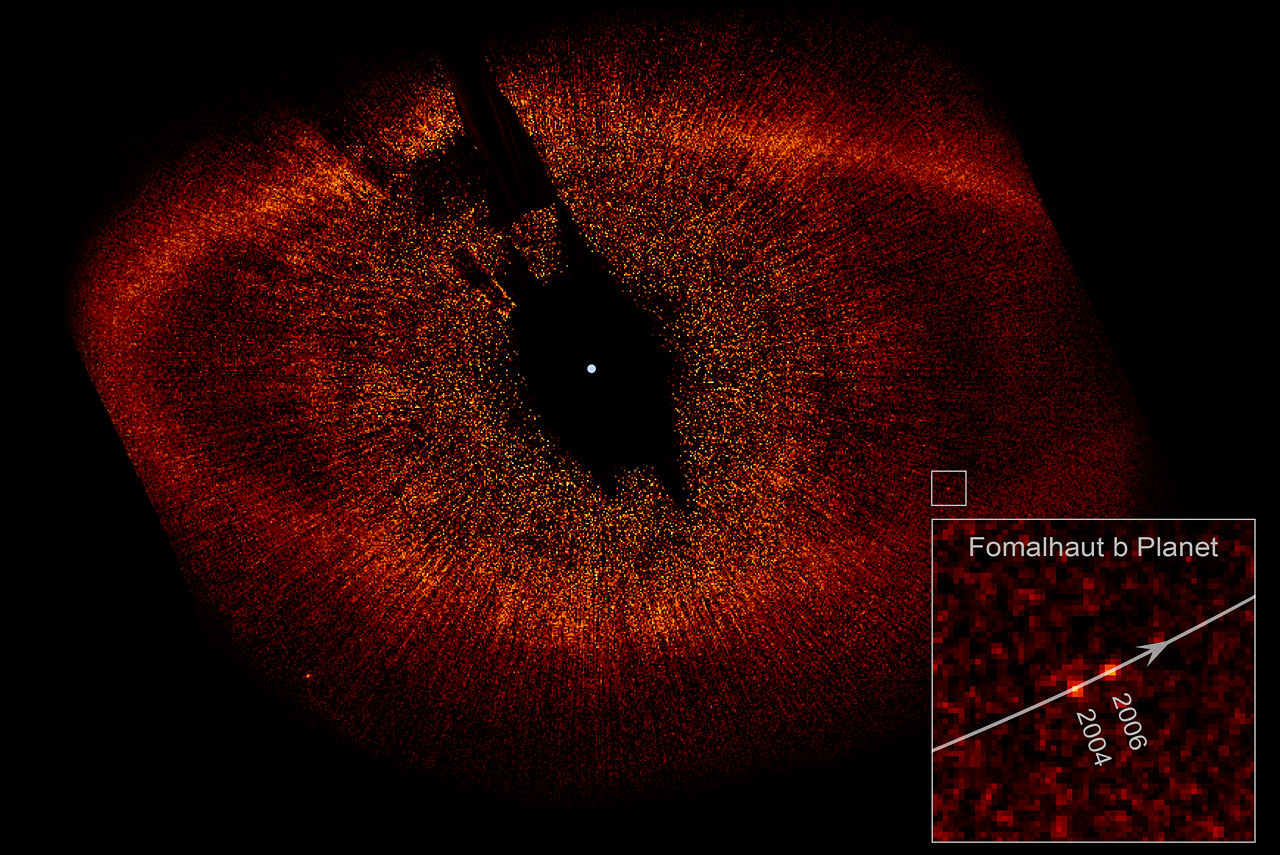 Back in 2008, the image at left was plastered across the front page of many science related publications. For the first time, scientists had directly imaged an exoplanet (a planet which orbits another star) with visible light.
Back in 2008, the image at left was plastered across the front page of many science related publications. For the first time, scientists had directly imaged an exoplanet (a planet which orbits another star) with visible light.Exoplanets themselves were nothing new. In late 2008, 333 exoplanet canidates were known, and 8 of those had been detected using direct imaging. In fact, Fomalhaut b itself, the planet pictured, was actually not truly a new discovery. Since 2004 scientists had been reasonably confident it existed because of the sharp inner edge of the band of dust around the star Formalhaut. The thought was that a large planet (namely Fomalhaut b) was sweeping the material from the inside of the band into itself.
Formalhaut b was an excellent choice for direct imaging precisely because it was large and it was clear roughly where it was. When the 2008 analysis of data from the Hubble space telescope was published by Paul Kalas, it was greeted with plenty of excitement, but not much surprise.
Since 2008, scientific consensus on Fomalhaut b has slowly disintegrated. The "planet" is much brighter than expected, which, according to models of planet formation, should mean it is very hot (and should radiate infrared light). Despite this, Fomalhaut b doesn't seem to show up in the infrared spectrum at all.
As of last month, there's another puzzling data point. A third image taken recently shows that Formalhaut b's orbit isn't as textbook-perfect it seemed back in 2008. If the new data is correct, the exo-planet would need to veer into the dust once every orbit. This means that it would be actively reshaping the cloud, which is entirely inconsistent with previous results. This is leading some scientists to doubt that Fomalhaut b is a planet at all, though it isn't clear what real alternatives exist.
Does all this mean we've never imaged an exoplanet before? To the contrary, we've imaged 24 other planets directly. Notable among these is HR 8788. Why is this particular system notable? There are two reasons. Also imaged in 2008 ( in infrared, rather than visible light), HR 8788 is to date the only star where we have imaged an entire planetary system.
In addition, in 1998, before any exoplanets had been detected, HR 8788 was imaged by Hubble in an attempt to find exoplanets. At the time, the study found nothing, but only because researchers didn't have the correct techniques to pick the exoplanets out of the data!
Recently, in a superb demonstration of how much astronomy had advanced over the last decade, astronomers went back to that 1998 data and used modern techniques to analyse the images. Lo and behold, out come the same three exoplanets (see below).
One can only imagine the data magic we'll be able to pull off in another 13 years of exoplanetary research.



No comments:
Post a Comment